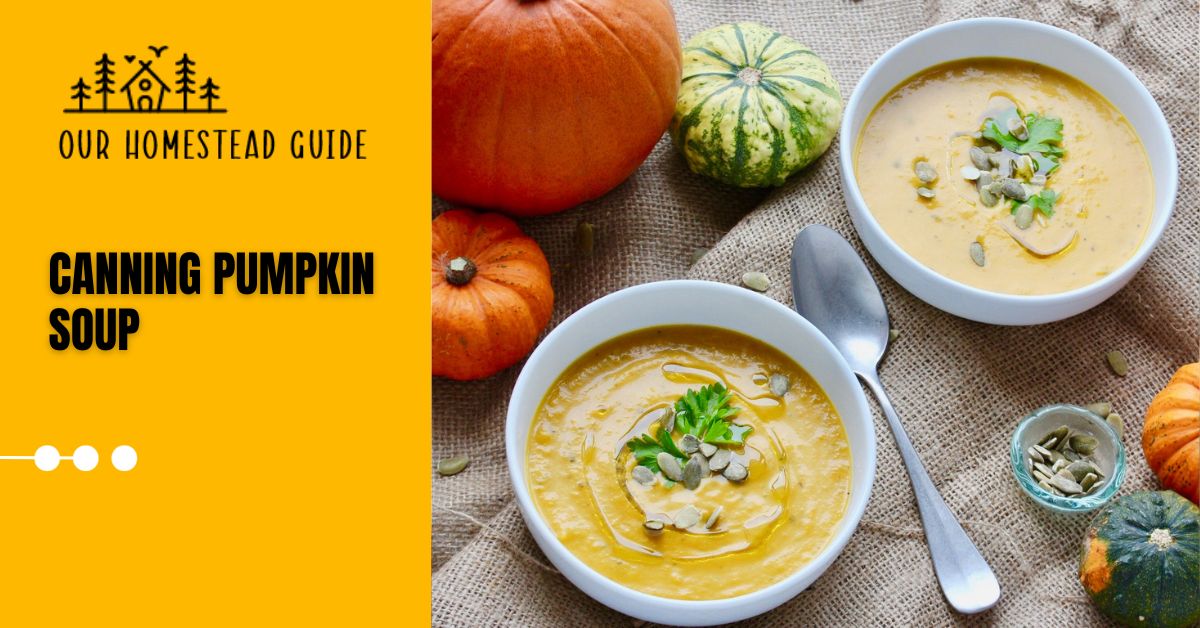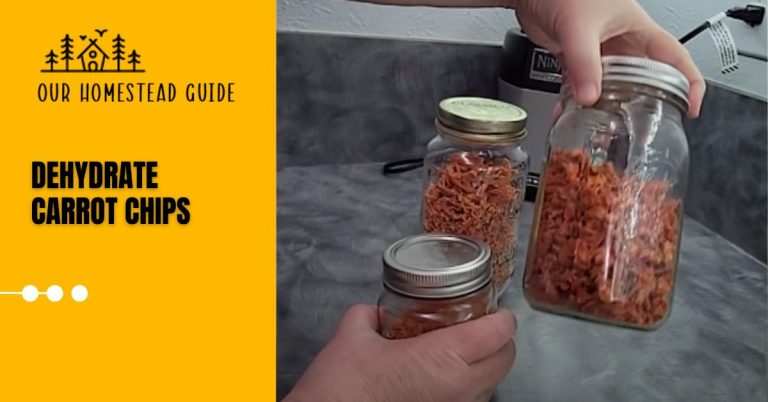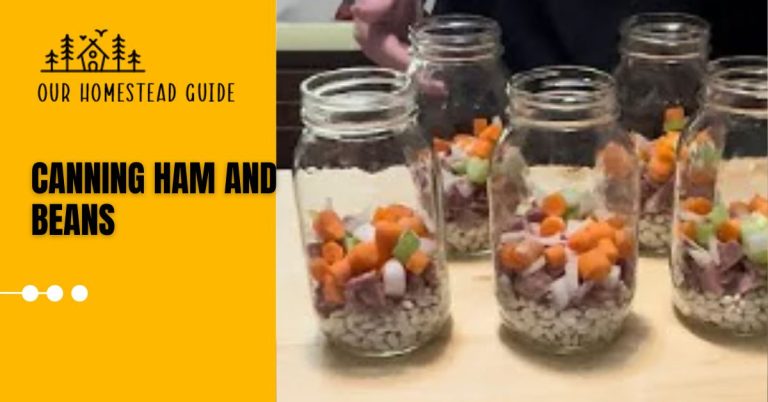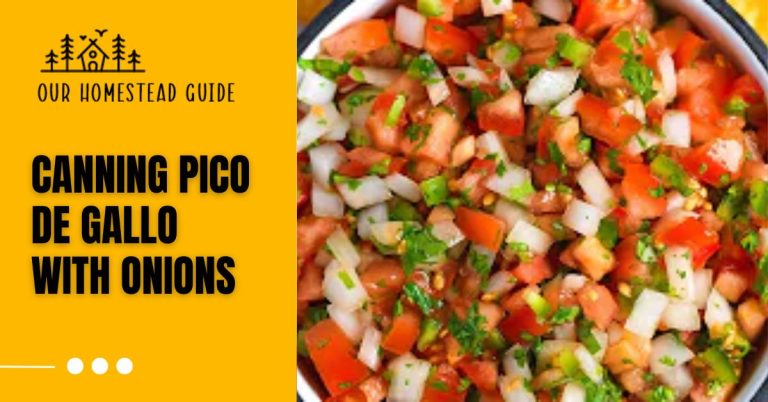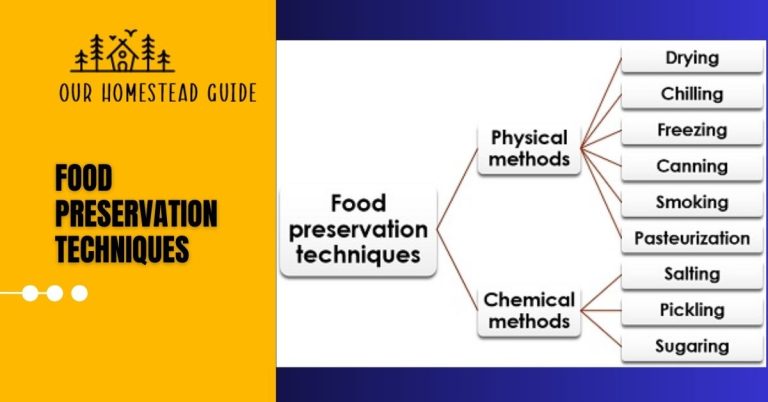Canning Pumpkin Soup: Quick How-To Guide
Canning pumpkin soup is a practical and flavorful way to preserve the rich flavor of this comforting dish. By carefully sealing cooked pumpkin soup in sterile jars, you can ensure its long shelf life while retaining its delicious flavors. This easy recipe allows you to enjoy the healthy goodness of homemade pumpkin soup year-round, making it a versatile addition to your pantry.
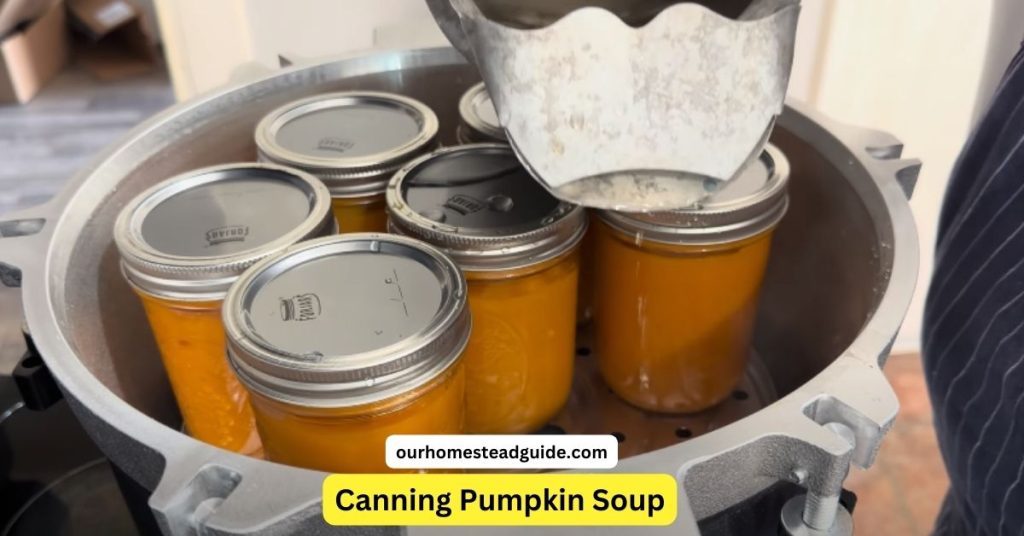
Just a warm-up away from enjoying a hearty bowl of pumpkin goodness, canning brings convenience and flavor to a jar.
1-Pumpkin Soup Recipe
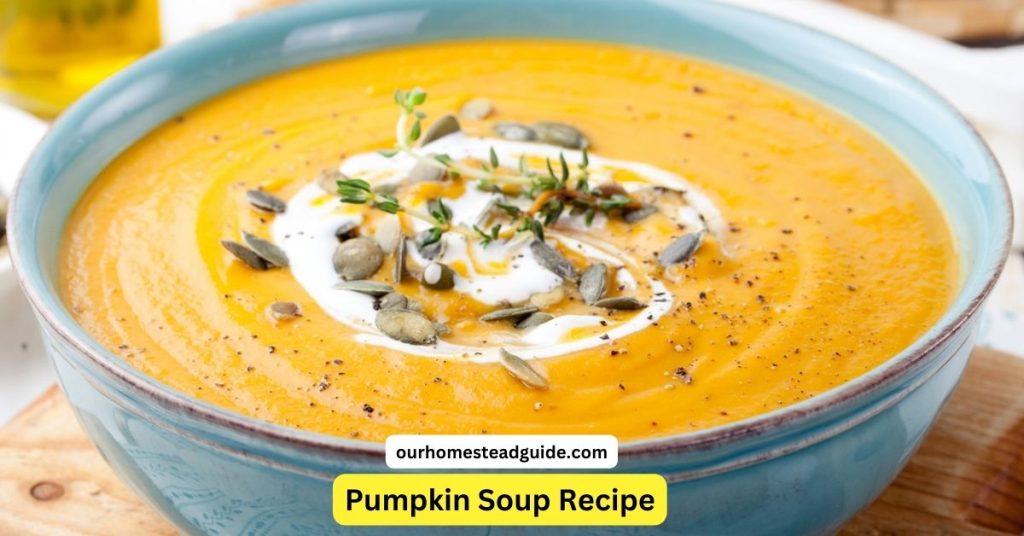
1. Pumpkin
- 2 pounds (about 1 kg) of fresh pumpkin, peeled, seeded, and diced into 1-inch cubes. You can also use canned pumpkin puree if you prefer.
2. Onion
- 1 large onion, chopped
3. Garlic
- 2-3 cloves of garlic, minced
4. Vegetable Broth
- 4 cups (1 liter) of vegetable broth (you can also use chicken broth if you’re not vegetarian)
5. Heavy Cream or Coconut Milk (for creaminess, optional)
- Depending on how creamy you want the soup to be, use 1/2 to 1 cup.
- For a dairy-free alternative, coconut milk can also be used.
6. Butter or Olive Oil
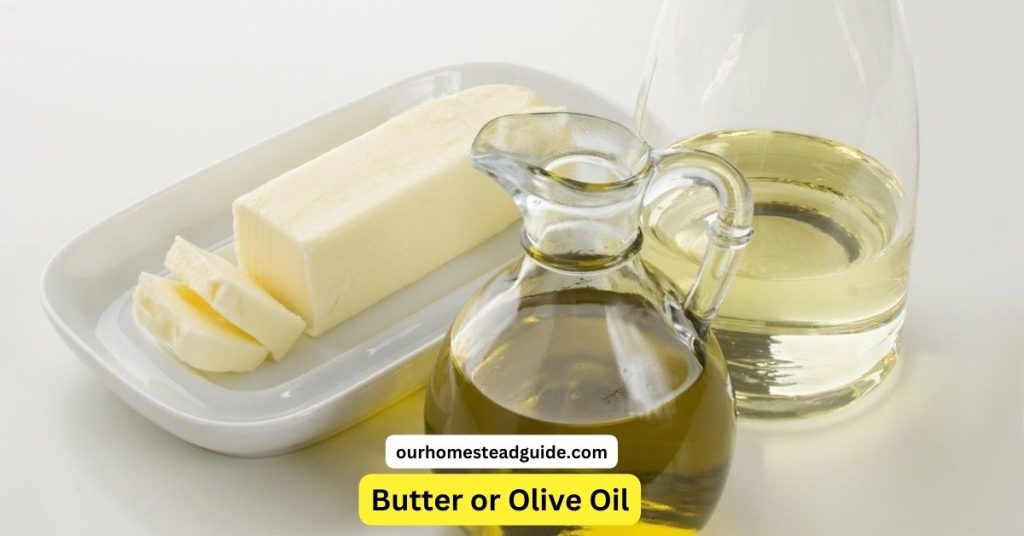
- 2 tablespoons for sautéing the onions and garlic
7. Seasonings
- pepper and salt as desired
optional 1/2 teaspoon of powdered nutmeg - Cinnamon powder, 1/2 teaspoon (optional)
- Cayenne pepper or red pepper flakes for a little heat (optional)
8. Garnish (optional)
- For garnish, use fresh cilantro, chives, or parsley.
- Pepitas, or toasted pumpkin seeds
- Yogurt or soured cream
Instructions
1. Sauté Onions and Garlic
Melt the butter or warm the olive oil in a large soup pot over medium heat.
Add the minced onions and garlic, and cook for 5 to 7 minutes, or until the onions and garlic are transparent and aromatic.
2. Add Pumpkin and Seasonings
Put the cubes of diced pumpkin in the pot.
Add salt, pepper, cinnamon, nutmeg, and red pepper flakes (if using) as seasonings.
Allow the flavors to mingle for an additional 5 minutes while stirring.
3. Add Broth and Simmer
Bring the mixture to a boil after adding the veggie broth.
When the pumpkin is ready, turn the heat down to low, cover the pot, and simmer for 20 to 25 minutes.
4. Blend the Soup
The soup can be smoothed out in the pot using an immersion blender. Alternately, allow the soup to cool a little before using a standard blender to carefully mix it in batches.
5. Add Cream (or Coconut Milk)
To make the soup creamy, stir in the heavy cream or coconut milk. To achieve the correct consistency and flavor, alter the amount.
6. Taste and Adjust
When adjusting the seasonings, taste the soup and, if necessary, add additional salt, pepper, or spices.
7. Serve
Into bowls, ladle the pumpkin soup.
Add toasted pumpkin seeds, fresh herbs, and, if preferred, a dollop of sour cream or Greek yogurt to the dish as a garnish.
2-Canning Pumpkin Soup
Equipment Needed
Gather the necessary supplies before starting to can pumpkin soup: a pressure canner, quart-sized canning jars, new lids, and bands. For cooking the soup, you’ll also need a sizable saucepan, a ladle, a funnel, and a jar lifter. To securely preserve your mouthwatering pumpkin soup for future enjoyment, follow tested recipes, maintain cleanliness, and follow the recommended canning processes.
Processing Steps
Pumpkin soup canning requires several essential processes. First, make the soup by a reliable recipe. The canning jars, lids, and bands should then be sterilized. Leaving adequate headroom, pour the hot soup into the heated jars. Clean the jar rims, put the lids on, and tie the bands. Jars should be put in a pressure canner, and the pressure and processing time should be followed.
Safety Tips
Prioritize safety when canning pumpkin soup. For low-acid foods like soup, always use a pressure canner to stop bacterial development. To ensure optimum acidity levels, strictly adhere to tested recipes. Verify the cleanliness and integrity of the jars, lids, and bands. Finally, follow the processing guidelines to ensure secure, long-lasting preservation.
3-Nutrition Information
Calories and Macronutrients
Information about nutrition offers useful insights into the makeup of food. It often contains information on calories as well as macronutrients including proteins, carbs, and fats. To help people make educated dietary decisions for a balanced and healthy lifestyle, macronutrients and calories both measure the amount of energy in food and calories measure the type and quantity of vital nutrients.
Vitamins and Minerals
More than just calories and macronutrients, nutrition information also contains crucial information on vitamins and minerals. These micronutrients are necessary for some biological processes, including preserving a robust immune system, strong bones, and appropriate cell function. Individuals can ensure they are eating a balanced and nutrient-rich diet by understanding the vitamin and mineral content.
4-Serving Ideas
Garnishes and Pairings
Improve your meal with original garnishes, serving suggestions, and food combinations. Try adding a dollop of sour cream or a scattering of finely chopped fresh herbs like parsley or chives to a bowl of hearty pumpkin soup. For a filling and healthy supper, serve the soup with warm crusty bread or a side salad.
Calories and Macronutrients:
| Serving Size | Calories | Protein (g) | Carbohydrates (g) | Fat (g) | Fiber (g) |
| 1 cup | 150 | 2 | 20 | 8 | 5 |
Pressure canning pumpkin soup
Our warehouse is currently only 2°C which is not high enough to store pumpkins. From searching the internet I understand that they are stored at room temperature. I have very beautiful pumpkins in the garden and it is useless to spoil them. I already baked some in the oven, cleaned them, and froze the puree on display for pumpkin pie and pumpkin pancakes.
I don’t like putting everything in the freezer. It uses power and if there is a blackout, everything in the freezer feels damaged. And for us going on a long price trip and can’t take a freezer with us, I’m trying to get some pumpkin.
I am starting to use pumpkin for soup. That way I’ll have some easy meals and I can use some of the other vegetables from the garden at will. I chopped up 2 pumpkins (picking some seeds to plant next year), some onions, some garlic (garlic is very strong in flavor), carrots, and some root celery.
It was topped with freshly cooked bone broth from the chicken carcasses we bought and pressure canned the meat. I filled 5 large jars and 5 small jars, to fill the canner as much as it could hold.
benefits of Canning Pumpkin Soup
Canning pumpkin soup can offer several benefits, primarily centered around convenience, preservation, and the ability to enjoy homemade soup over an extended time. Here are some advantages of canning pumpkin soup:
- Extended Shelf Life: Canning pumpkin soup allows you to preserve the soup for an extended period, typically up to a year or more, depending on the canning method used and storage conditions. This means you can enjoy homemade pumpkin soup even when it is out of season.
- Convenience: Canned pumpkin soup provides a quick and easy meal option. It eliminates the need to prepare the soup from scratch every time you want to enjoy it. Simply open a can, heat the soup, and you have a nutritious and delicious meal ready in minutes.
- Nutrient Retention: Proper canning techniques can help retain the nutritional content of the soup, including vitamins, minerals, and flavors. Canning preserves the quality of the ingredients without the need for excessive preservatives.
- Cost-Effective: Canning pumpkin soup can be a cost-effective way to make use of excess pumpkins during the harvest season or take advantage of sales on canned pumpkins.
- Homemade Flavor: By canning your pumpkin soup, you have control over the ingredients and flavors. You can tailor the recipe to your preferences, ensuring that the soup tastes just the way you like it.
- Emergency Preparedness: Canned pumpkin soup can be part of your emergency food supply. In case of natural disasters or other emergencies, having canned food on hand can provide a source of nourishment when fresh ingredients are scarce.
- Gifts and Sharing: Canned pumpkin soup can be a thoughtful homemade gift. You can prepare batches of soup and give them to friends and family, allowing them to enjoy your cooking even when you’re not there to make it fresh.
- Time Savings: Canning pumpkin soup in larger quantities means you can save time by cooking in bulk. This can be particularly beneficial for busy individuals or families, as it reduces the frequency of cooking and meal preparation.
It’s important to note that canning requires proper equipment, sanitation, and adherence to safe canning practices to prevent the growth of harmful bacteria and ensure the long-term preservation of the soup. Follow trusted canning recipes and guidelines from reliable sources such as the USDA’s National Center for Home Food Preservation or similar organizations in your country to ensure food safety.
Certainly, here are the benefits of canning pumpkin soup in short bullet points:
- Long Shelf Life: Can be stored for a year or more.
- Convenience: Quick, easy meal preparation.
- Nutrient Retention: Preserves vitamins and minerals.
- Cost-Effective: Utilize surplus pumpkins or sales.
- Flavor Control: Customize to taste preferences.
- Emergency Ready: Valuable for emergency food supply.
- Thoughtful Gifts: Homemade presents for loved ones.
- Time Efficient: Cook in bulk, save cooking time.
Conclusion:
In conclusion, preserving pumpkin soup is a worthwhile culinary project that guarantees the year-round accessibility of this delectable dish. You can have the convenience of a well-preserved, homemade pumpkin soup that captures the essence of fall flavors whenever you choose by following proper canning procedures.
Most Frequently Asked Questions!
- Can you make pumpkin soup with dairy ingredients?
- It’s generally not recommended to can pumpkin soup with dairy ingredients, as they can break down and result in undesirable texture or spoilage. Instead, add dairy when reheating the soup after opening a canned jar.
- What type of pumpkin is best for canning soup?
- Choose sweet, flavorful pumpkin varieties like sugar pumpkins or pie pumpkins for the best results in pumpkin soup.
- Can you use homemade broth in canned pumpkin soup?
- Yes, homemade broth can be used. Just ensure it’s properly strained and free from any particles that could potentially cause spoilage.
- How do I ensure the soup is safe to can?
- Use tested canning recipes from reputable sources. Follow proper canning procedures, including using correct jar sizes, and processing times, and maintaining hygiene.
- Can I add herbs and spices to canned pumpkin soup?
- Yes, you can add herbs and spices before canning. However, avoid excessive amounts that might overpower the flavor during storage.
- Is it necessary to pressure pumpkin soup?
- Pumpkin soup is a low-acid food, so it’s recommended to use a pressure canner for safe preservation to prevent the growth of harmful bacteria.
- Can I add meat to pumpkin soup before canning?
- If adding meat, follow approved recipes and guidelines. Note that meat adds complexity to canning, so ensure proper cooking and processing times.
- How long can canned pumpkin soup be stored?
- When properly canned and stored in a cool, dark place, pumpkin soup can remain safe to eat for about a year or longer.
- What’s the recommended canning process for pumpkin soup?
- Follow the tested canning process for your altitude and equipment, which generally includes preparing the soup, filling jars leaving headspace, processing in a pressure canner, cooling, and storing.
- Can I adjust canning recipes to my taste?
- While you can adjust some ingredients for flavor, it’s important to maintain proper ratios of high-acid and low-acid ingredients for safety. Altering canning recipes can affect pH levels and preservation.
- What should I do if a canned jar appears compromised?
- If a jar is leaking, bulging, or has an off odor, do not consume its contents. Dispose of it properly to avoid foodborne illness.
- Can I reuse jars and lids for canning?
- Jars are generally reusable, but lids are designed for single use only to ensure proper sealing. Replace lids before canning each time.
you may also like this article.

